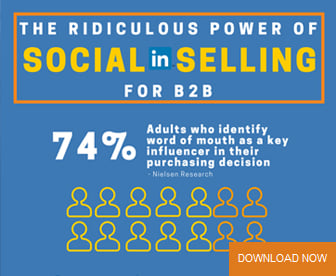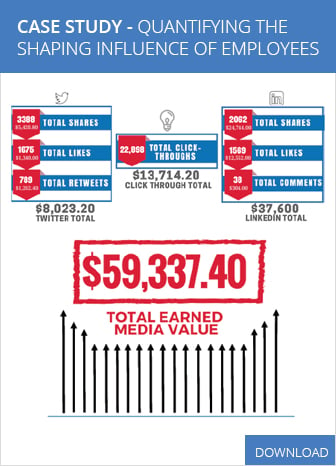Industry Leader Jon Arnold Discusses the State of Communications and Collaboration
As a long-time independent telecom analyst and consultant and principal of J Arnold & Associates, Jon Arnold has a unique perspective into communications technologies and trends. He’s worked with both small companies and heavy hitters in the IT and telecom space and also specialized in the VoIP sector for Frost & Sullivan.
Arnold will be moderating two conference sessions at the upcoming ITEXPO East in Ft. Lauderdale next month, lending his leadership and experience on key communication topics. “Are You Communicating or Collaborating?” will focus on the differences among a variety of unified communications (UC) solutions and their main functions. “Making Video Easy – How Hard Can it Be?” will discuss the steps required for a successful video project, with participants from Yorktel, Masergy Communications and Polycom sharing their input.
We got a chance to ask Arnold about his thoughts on some key issues and challenges in today’s communication space, topics that will a major focus at ITEXPO.
Q: Is technology changing business for the better? Why/why not?
A: I can definitely answer that from both sides. On the plus side, technology is more accessible and affordable than ever, and that has certainly been a good thing for how we communicate and get things done in the workplace. It’s much easier to stay in touch, and with richer applications, teams can work more productively than via using legacy technologies.
Conversely, this makes people accessible any place/any time, and that creates heightened performance expectations. We seem to enjoy -- and even expect -- 24/7 accessibility in our personal lives, but this is becoming the norm at work, making it harder to find real down time. Some people manage this better than others, but as the flow of information keeps expanding – both at home and at work – we eventually hit a limit at which point productivity suffers. If this state continues, morale will drop and employee turnover will rise, so businesses need to be mindful not to let technology do more harm than good.
Q: Have we finally reached an inflection point with Unified Communications adoption? What is driving or hindering the market?
A: I don’t think there will ever be a true inflection point for UC, as it doesn’t really solve a tangible problem. This has been the inherent challenge, since most UC offerings do not bring new applications. Rather, UC integrates existing applications in new ways that create business value. While the benefits are definitely desirable, they are difficult to articulate, as well as to measure.
UC offerings continue to evolve, and with that, we will see more metrics that help support the business case. We’re moving towards Big Data and the Internet of Things, and with that comes the emerging world of predictive analytics. UC vendors are learning how to apply these to their offerings, and as ROI metrics around productivity develop the path to adoption should become easier.
Q: What do you say to industry observers who say UC is dead?
A: There is some truth to that, especially if thinking about first generation offerings. This has always been a vendor-driven market where UC was seen as the successor to their declining IP-IPX business. Phone systems still persist, and the technical complexities around deploying UC have also hindered adoption.
UC, however, is attractive because it becomes the hub of communications, and that opportunity has attracted newer vendors from outside the traditional telephony space. This has brought innovation by approaching the challenges of workplace collaboration from other directions, namely the cloud and mobility. Today’s UC landscape is much richer than before, with the solutions taking a variety of forms. Standalone, purpose-built UC platforms still dominate, but we are also seeing UC functionality being embedded in vertical applications from software vendors to make their offerings more attractive. There simply isn’t one flavor of UC any more, which puts the onus on decision-makers to clearly define their needs and match those up against a diverse range of options from the vendor community.
Q: When it comes to unified communications, do you believe it’s better to meet customers where they are (i.e., popular business applications like Salesforce, or social networks like LinkedIn) or to use your interface as the front-end and then do integrations with those popular applications?
A: This is a great question, as it speaks to the shifting balance of power between end users and IT. A core challenge for UC is the fact that the economic buyers are not the ultimate end users. UC vendors would have an easy time if they only had to worry about meeting the needs of IT. This used to be the norm, but the democratizing effect of the Internet means that end users have many levers that didn’t exist previously. Increasingly, they are now able to define their user experiences, and expect applications to be highly customizable.
If IT can’t deliver this, end users will simply find what they need elsewhere on the web. In that world, vendors are realizing now that you have to meet customers where they are, and this is where the most innovation is happening around UC. Many businesses, however, still want more centralized control over how applications are used and instead will support a horizontal, purpose-built UC platform. This is where most of the money is for UC, and vendors will in turn support that for as long as possible. However, in terms of where end user behaviors are going, the trend will be for more user-defined experiences, including UC.
Q: How do you use social media in your daily business? Should social be a major initiative for all businesses?
A: My use is fairly typical, with Twitter and LinkedIn being my main tools. I use Twitter primarily as a channel to share my thought leadership, which is posted in a variety of places. LinkedIn is used the same way, but also as a form of networking to keep tabs on what people I’m following are up to. Otherwise, I’m rather old school, and only use Facebook beyond these two, but strictly for personal purposes.
The terms social media and social business are becoming intertwined, and that speaks to the growing need to have a social presence in business. Customers expect it, and social media is playing a growing role in the contact center. While it’s always good to have better access to customers, social media is blurring the lines among sales, marketing and contact center personnel, and that’s creating new challenges for properly managing these new flows of information. As such, businesses should not take a casual approach to social media, as tech-savvy customers will move on if you can’t engage them effectively with their tools of choice.
Q: How are collaboration software/services helping workers today?
A: When used effectively, these tools allow employees to collaborate in the moment. This is a big change from legacy times, when most forms of meetings needed to be scheduled. Meeting rooms had to be booked, reservations for video equipment had to be made and audio bridges for conference calls needed to be arranged. More often than not, collaboration efforts were dictated by these realities, and options for people in remote locations were limited.
Today’s workplace is becoming decentralized for many reasons, and more than ever, businesses need good collaboration tools, especially for remote workers. This is a key aspect of UC’s value proposition, especially when the applications are cloud-based. Now, employees can collaborate on demand and participate from any broadband connection, using either fixed or mobile devices. By being able extend these tools to all employees, businesses can get the right/best people for each team requirement, and that should translate into better results all around. Less time will be wasted, meetings will be shorter, projects will be completed in less time and the quality of decision-making should be improved.
Q: What is the biggest security threat currently facing businesses?
A: The biggest security threat really is internal. External threats from hackers are persistent and getting smarter/bolder all the time. While 100-percent protection is not a realistic goal, businesses don’t focus enough on taking a holistic view of data security. As such, the main threat comes from not assessing the various forms of risk that touch the network. Prime examples include VoIP, mobile devices, remote access from the public Internet, and the use of public cloud offerings. This landscape is constantly changing, and businesses need to understand that all forms of data – voice, text, video – can create network vulnerabilities for hackers to exploit.
Q: How are companies benefitting or losing out from the move to cloud solutions like Office 365?
A: The main change here is giving up control over software that IT had been managing previously. For the most part, this is a question of resource prioritization. IT no longer can – or wants to – manage everything, and in some cases, the complexities around the software are too much to handle. With reduced budgets and resources, IT has to make business decisions about what they really need to keep and what can be managed from the cloud.
This is happening more often now – such as with Office 365 – mainly because the cloud has matured to the point where it’s a viable option. Furthermore, as the cloud keeps achieving economies of scale, the cost advantage is becoming a key driver. Long-term, the cloud may be more expensive, but IT is more concerned with today’s needs, and the cash flow impact of the cloud may trump their desire to maintain ownership and in-house control.
Q: What has been the most impactful development or trend in 2016 that is changing how industry players need to do business?
A: Generally speaking, I’d say it’s the rise of Millennials. This has been growing for some time, and they are now a major force in all markets. They are not quite yet in key decision-making roles, but that time will soon come. Many UC vendors are responding, not just with their offerings, but also their internal cultures. Their offerings are increasingly catering to how this tech-savvy audience likes to work, and it’s much different than before. We’re also seeing these companies with more Millennials in their management ranks, and making better use of social media to engage with the market.
Q: What is the greatest challenge the channel is up against today?
A: There’s definitely a generational shift happening, where the established channel players are still selling hardware and premise-based point solutions. Today’s market is more cloud-based, and with that comes the move from Capex to Opex. Not only are the technologies different, but so are the business models. Legacy-based channels must choose to adapt and follow new opportunities, or maintain the status quo with existing customers. The latter will only carry them a few years, and unless they are prepared to invest for tomorrow, they may be best off exiting now before the decline becomes too steep.
Q: What are you most looking forward to at ITEXPO Ft. Lauderdale?
A: Having missed the last two West shows, I am definitely looking forward to re-connecting with the ITEXPO team and seeing how the mix of exhibitors and speakers has changed. I am also keen to take in the co-located events, which have some cutting edge themes, especially IoT Evolution, Connected Homes and Buildings and Wearable Tech.
Edited by Kyle Piscioniere











